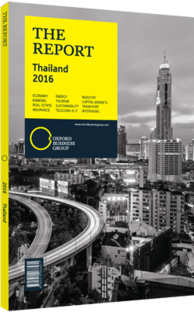Nopparat Maythaveekulchai, President, Thailand Convention & Exhibition Bureau (TCEB): Interview

Interview: Nopparat Maythaveekulchai
How did the meetings, incentives, conventions and exhibitions (MICE) segment perform over 2015 and what are expectations for growth?
NOPPARAT MAYTHAVEEKULCHAI: While the MICE segment was affected by the political demonstrations during 2014, it saw a significant recovery in 2015 as the revenue per MICE traveller increased by approximately 14-18%. We have launched two master plans in conjunction with the 11th National Economic and Social Development Plan, the first of which runs from 2012 to 2016 and the second running from 2017 to 2021.
The first master plan’s mandate is to promote the MICE segment in ASEAN – with the expectation of increasing the number of travellers to Thailand itself by 5-10% – and promoting Thailand as a prime destination, whilst supporting the MICE segment as distinguished from the greater tourism sector. The mandate of the second master plan is to increase the revenue per traveller by about 10% annually by increasing Thailand’s tourism competitiveness, efficiency and quality to prolong the stay of MICE travellers. At 1.2% of GDP - approximately BT110bn ($3.3bn) – MICE revenue is Thailand’s third-largest sector by contribution to the GDP after exports and tourism. If the targets of both master plans are achieved, the segmetn’s revenue will significantly increase, to BT200bn ($6bn) by the end of the second master plan.
To what extent is there competition among ASEAN member nations in attracting MICE tourism?
MAYTHAVEEKULCHAI: Thailand is working to significantly increase its competitiveness among ASEAN countries, the success of which depends on both fiscal and non-fiscal factors in the country, such as ongoing development of transport infrastructure, airport expansion and additional facilities within Bangkok. Given all these developments within the different economic sectors, the MICE segment can expect significant growth, which directly influences the overall competitiveness of conference tourism. ASEAN, in particular, is more open to cooperation rather than direct competition in the segment. Countries in the region are cooperating in order to mutually develop standards and increase the quality and efficiency of MICE activities. TCEB, for example, has signed several memoranda of understanding with neighbouring countries, including Vietnam, Laos, Myanmar and others, to establish the possibilities of mutual strategising, sharing know-how, and promoting information, labour pool and technology exchange.
What are key markets for attracting MICE participants and what potential do you see for new markets in attracting MICE participants to Thailand?
MAYTHAVEEKULCHAI: In the last two years, the majority of MICE travellers to Thailand have originated from Asia, with the largest portion being Chinese travellers, followed by Indians, Singaporeans, Malaysians and Australians. Last year the US market showed increasing numbers, ranking 10th, although we expect this market to grow in the short term. One major benefit of Thailand is its strategic location, which allows travellers to connect to most of the other ASEAN nations in under three hours by air.
To increase existing markets and attract new markets, TCEB has developed a public-private partnership model as a management framework for cooperation to support the MICE industry. TCEB will focus on market promotion, market intelligence and the exchange of information among MICE partners across the ASEAN region. Specific partnerships include close cooperation with the Ministry of Foreign Affairs and relevant embassies to promote and support information sharing, cooperation with airlines – for establishing more connections to certain parts of the region and beyond – and, finally, cooperation with the Tourism Authority of Thailand to prolong the average stay and increase the average revenue of MICE travellers.
You have reached the limit of premium articles you can view for free.
Choose from the options below to purchase print or digital editions of our Reports. You can also purchase a website subscription giving you unlimited access to all of our Reports online for 12 months.
If you have already purchased this Report or have a website subscription, please login to continue.

